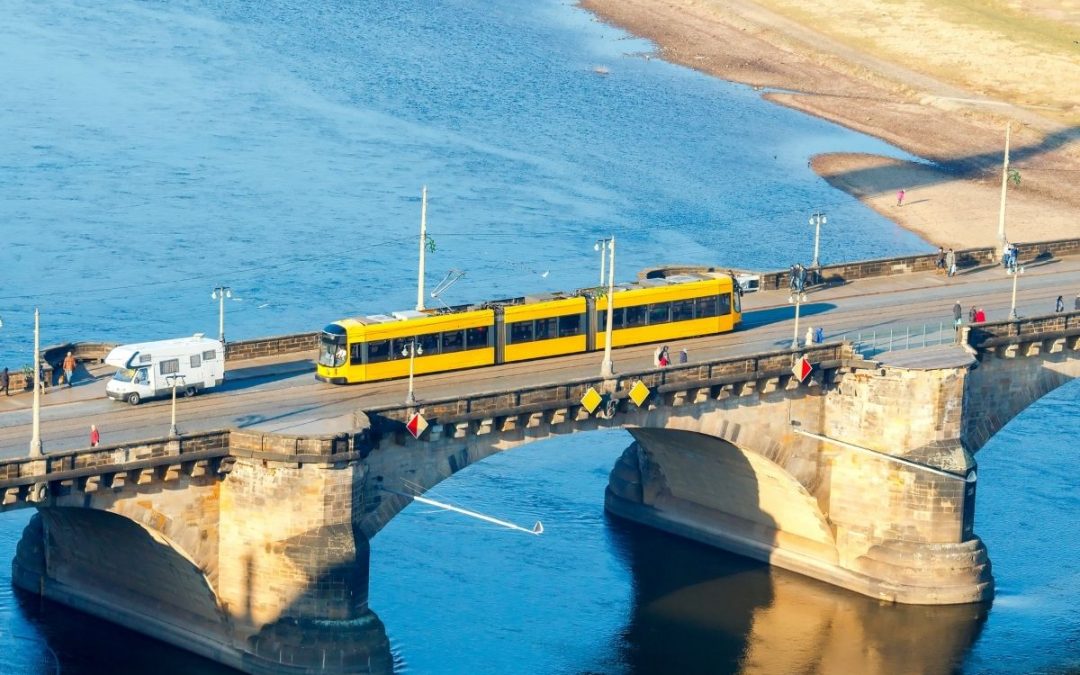Published May 5th, 2021
Bridges come in all shapes and sizes. They can be short, long, arched, straight, or cantilevered. But what makes a bridge really remarkable, aside from its aesthetics, is a strong structural design.
Engineers work toward building strong bridges that can last generations and can stand any weather disturbances. However, bridge construction projects are often funded by taxpayer money, thus creating a strict budget to work within. Thus, a bridge designer’s main challenge is how to efficiently use the resources at hand to create the strongest bridge structure possible.
So how do you create a strong bridge design? Here are some of the things you should consider:
What to Consider When Designing a Bridge
The main goal of a bridge design is to effectively redirect all forces to tensile and compressive forces. To do that, you must consider certain factors such as:
Expected Traffic
This is one of the most important factors to consider in a bridge design. The heavier the traffic, the more load the bridge will have to hold. If the bridge’s load capacity isn’t enough to hold the usual traffic it gets, it can easily collapse.
Wind Load
Aside from the traffic, you also have to consider weather disturbances. If the area is prone to earthquakes, you may need a design that can withstand heavy shaking. If the area is prone to floods or landslides, you also need to incorporate that into your design.
Availability of Materials
Due to the cost of transporting materials, you’ll usually have to make do with locally available ones. Most modern bridges use steel, iron, and concrete as they are readily available in most places. Besides, they tend to make stronger bridges and are cheaper to maintain. But in areas where wood or stone is abundant, they are often the go-to materials for bridge construction.
Navigation Clearance Requirements
If you’re building a bridge over a major road or waterway, you may need to secure a navigation clearance. This means that a bridge has to be a certain height so that vehicles can safely pass underneath it.
Environmental Factors
In some places, you’ll need to secure an environmental permit to start a construction project. This ensures that the project won’t harm the environment. This is especially true if you’re building a bridge in protected areas. So you will need to consider that in your design too.
Surface Terrain
If you’re building a bridge, you obviously have to consider the topography of the area. Is it a flat area or a mountainous one? What’s the highest point in the area? You’ll need to consider this in your design so you’ll know how high the bridge needs to be.
Budget
Most construction projects have a set budget. So no matter how elaborate or structurally strong you want the bridge to be, you’ll still have to work within the budget.

Elements of a Strong Bridge Structure
One of the questions people often ask about bridge construction is: what’s the strongest bridge design? Well, there really is no specific answer to that. The strength of a bridge depends on a variety of factors. Most structurally strong bridges, however, have the following in common:
Quality Materials
There are pros and cons to every type of construction material. But opting for quality can never go wrong. Bridges with high-quality materials tend to last longer. Just think about those Roman aqueducts that are still standing today.
Right Span
A bridge’s span refers to the distance between two intermediate supports. In general, bridges with shorter spans are much stronger. But there are situations where a short span is not economically possible. In these instances, a long span may be justified but it must have the right support structure.
Effective Load Distribution
As mentioned above, the main goal of a bridge’s design is to effectively distribute loads throughout the entire structure. If the load is not distributed correctly, the strain will concentrate on one or a few parts of the bridge causing it to collapse. This is why, if you look at most modern bridges, most of them use triangles in their structure. Triangles are efficient as they don’t use that much material but can handle heavy loads without breaking.
Remember that a chain is only as strong as its weakest link. The same principle applies to bridges too. So if you want to have a strong and stable bridge, make sure to cover all your bases.
Interested In Cutting Technologies?
For nearly 40 years Cutting Technologies (CTI) has been the go-to demolition contractor for technically demanding, one-off jobs. Our wealth of experience enables CTI to bring “outside-of-the-block” approaches to achieve the impossible. Contractors trust CTI to get the job done right. Take a look at our demolition services on our website.

About The Author
As an avid traveler, Judy Ponio loves to write blogs about traveling and how to save money when making international calls.

